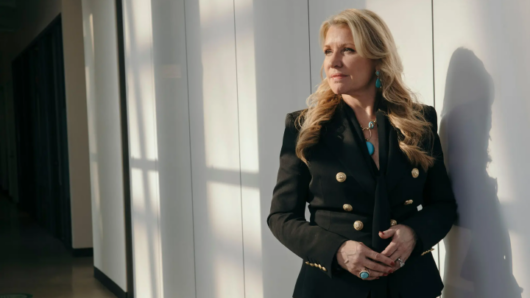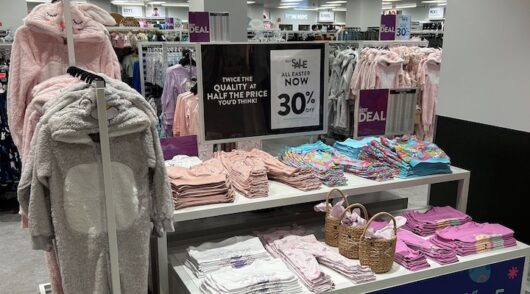For medium-to-large retailers, it’s mission-critical to understand the dynamics between consumers and the brands they love. This understanding is key to developing growth strategies to resonate with target markets, as different customer cohorts each have their own distinct relationships with brands – variously prioritising factors such as price, quality, and a shared sense of purpose. It’s only when retailers can successfully align their value propositions with the desires and preferences of their core consumer base that they can forge deeper connections with customers and foster true brand loyalty.
As the commerce platform powering 25 per cent of online retail in Australia, Shopify is well-placed to monitor evolving consumer relationships with the brands that command their enduring support. Shopify’s recent study, “The Australian Retail Report 2023”, takes a deep dive into shifting consumer behaviour and pathways to growth while guiding retailers in messaging strategies that can capture buyer attention, resonate with their core values and ultimately drive engagement and spending.
“For the majority of Australians, brand love is conditional,” says James Johnson, Shopify’s director of technology services and enterprise for Apac. “Brands can’t rest on their laurels and expect customers to keep coming back because they delivered a good experience once in 2008. The barriers to entry are getting lower and new brands are finding innovative and dynamic ways to connect with consumers and build communities. If salespeople are only as good as their last quarter, retailers are only as good as their last customer experience.”
According to the report – which identifies six distinct customer cohorts with clearly defined behavioural characteristics – brand loyalty is far from dead, with 36 per cent of Australians reporting always shopping from favourite brands. This doesn’t imply that other shoppers won’t jump to a competing brand if the price is right, however, with 37 per cent of Shopify’s survey respondents suggesting they prioritise quality over price, and another 21 per cent purely focused on price. Evidently, the deciding factors behind whether or not a customer switches brands for a better price have a lot to do with who that customer is.
“The events of the past few years have upended consumer behaviours and priorities around Australia, and this impacts the way consumers want to connect with their favourite brands too,” says Johnson. “There are broad trends that are important – such as Australians spending more time at home or prioritising health more than they did in 2019. But when you dive deeper into each of the six cohorts we’ve identified, you start to see some of these behaviours and priorities diverge.”
“The three largest cohorts we identified, by population, were characterised by their focus on value – with the largest group doubling down on value-seeking behaviours. But they diverged on how stressed they were about the cost of living, and how optimistic they were about the economy and their own financial situations. More importantly, Australian consumer cohorts diverge in the expectations they have when shopping both online and offline, as well as the experiences that will win or lose their loyalty.”
These insights stand among many reasons why retailers are now pumping resources into customer experience (CX), as the majority (93 per cent) cited it as either important or critical to their business success. Personalisation sits as a top priority, with 41 per cent of B2C retailers investing in additional customer insights such as qualitative and quantitative data, and more than half (55 per cent) of enterprises with $500 million or more revenue investing in the integration of online shopping with the in-store experience.
“Understanding the value proposition you offer as a business, and tying that back to consumer insights, is key to understanding investment priorities for efficient growth,” added Johnson. “As retailers find themselves in an increasingly competitive environment, they need to consider doubling down on customer-focused initiatives – from technology investment such as AI and automation to personalisation and loyalty programs.”
Understanding the consumer – whether that be through shared values, price, quality or rewards for loyalty – has proven to be an effective strategy for ethical clothing retailer Boody. One example of this has seen the brand lean on its B-Corp status and sustainability mission to appeal to the conscience of its key consumer demographic.
“Sustainability is built into every single function of our business – and every team member, no matter their level, has impact-focused strategic initiatives so that we can drive change from the bottom up,” says Boody MD Shaun Greenblo. “With everything laddering up, we are able to drive tangible impact from supply chain all the way through to delivering Boody to our customer, and beyond. For us, sustainability is a journey, not a destination – and we’ll continue to push the boundaries to become good citizens of the world.”
According to James Johnson, Australian retailers should take a fresh look at the needs and expectations of their target customers, and consider if they are connecting with them in the right way.
“Navigating the way forward in this tough economic climate, and as consumer behaviours change, can feel like an uphill battle” he says. “Yet challenges like these can be the catalyst for innovation and evolution. Retailers should lean into this change, striving to take a closer look at their customers and review their strategies and tactics to check they’re fit for purpose right now, and in the future.”
For further insights into the Australian consumer and industry-informed recommendations from leading retailers, visit Shopify’s 2023 Australian Retail Report.






